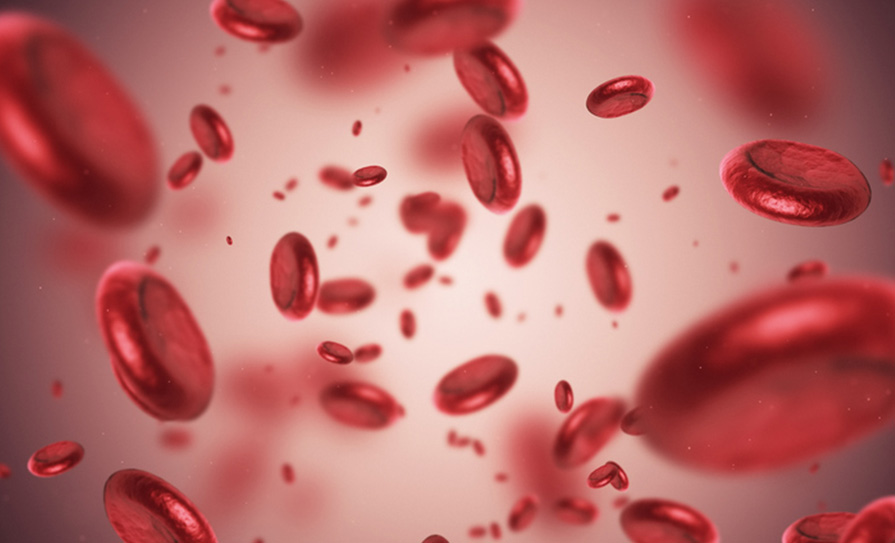
Patients with advanced kidney disease had nearly eightfold higher rates of anaemia compared with those with normal kidney function
A recent study by researchers at University of Limerick (UL) has identified high rates of anaemia among Irish patients, particularly in those with chronic conditions such as kidney disease.
The research found that while substantial numbers of patients in the health system had anaemia, there were relatively low rates of screening for treatable causes of anaemia, which highlights an important gap in care delivery programmes and emphasises the need for quality improvement initiatives.
The presence of anaemia is strongly associated with high rates of hospitalisation, death, and poor quality-of-life. The research, published in the journal BJGP Open, is the largest study ever to explore the burden of anaemia and the extent of investigation for underlying common causes in Ireland.
The study, carried out by a team at the UL School of Medicine, examined a cohort of 112,181 patients using data from the National Kidney Disease Surveillance System to assess for anaemia and followed them for up to one year to explore the use of screening tests that check for iron deficiency, B12, and folate deficiency.
The researchers found that 12 per cent of the assessed patients had anaemia with one-in-eight women (13.2 per cent) affected and one-in-10 men (10.5 per cent). Most of these patients were found to have had mild anaemia (9.1 per cent of total), with moderate-to-severe anaemia present in the remaining 2.9 per cent.
The percentage of patients with anaemia was particularly high in elderly patients and in patients with underlying medical conditions such as kidney disease and diabetes. As expected, the prevalence of anaemia increased with worsening kidney function (from 8.2 per cent, 10.9 per cent, 33.2-to-63.8 per cent, respectively, for each lower eGFR category >90, 60-89, 30-59, <30ml/min/1.72m2, P<0.001).
“Our study reveals a significant burden of anaemia that was present in several high-risk groups, including patients with diabetes, chronic kidney disease, and the elderly. The prevalence of anaemia increased exponentially in older men and women, highlighting their increased vulnerability,” commented senior investigator Prof Austin Stack, Foundation Chair of Medicine at UL’s School of Medicine and Consultant Nephrologist, University Hospital Limerick.
Patients with advanced kidney disease had nearly eightfold higher prevalence of anaemia compared to patients with normal kidney function, he noted. “Patients who attended the emergency room, outpatient departments or admitted to hospital were found to be particularly affected, with prevalence ranging from 18-to-29 per cent,” Prof Stack added.
Lack of screening
A striking finding in this study was the low frequency of screening for common correctable causes of anaemia. Less than 20 per cent of the patients with anaemia were screened for vitamin B12 and folate deficiency and only one-third were screened for iron deficiency during the three-month follow-up. Although there was some improvement in screening rates with increasing severity of anaemia, approximately 50 per cent of patients with severe anaemia (Hb <8g/dl) did not undergo screening.
Co-author Dr Leonard Browne, Senior Research Fellow in Biostatistics at the UL School of Medicine, said these findings were “remarkable”.
“Indeed, when we followed patients for up to 12 months, screening rates did increase although modestly for B12 and folate deficiency – 30 per cent – and doubled for iron deficiency – 46 per cent. These findings reveal that common causes of anaemia are inadequately tested for in the wider health system, especially among high-risk groups.”
Prof Stack emphasised the importance of screening for and identifying the underlying cause of anaemia. “We found that one-in-three patients had evidence of absolute iron deficiency, 6.3 per cent had B12 deficiency, and a further 5.8 per cent were folate deficient. All these deficiencies are easily treated in modern day clinical practice leading to significant improvement in the degree of anaemia. This study provides a valuable starting point from which we can begin to understand practice patterns in care delivery and the development of quality improvement programmes in the health system.”
Reference
Clancy CC, Browne LD, Gilligan R, Blake O, Stack AG. Prevalence of anaemia, iron, and vitamin deficiencies in the health system in the Republic of Ireland: A retrospective cohort study. BJGP Open. 2024 Apr 17:BJGPO.2023.0126





Leave a Reply
You must be logged in to post a comment.